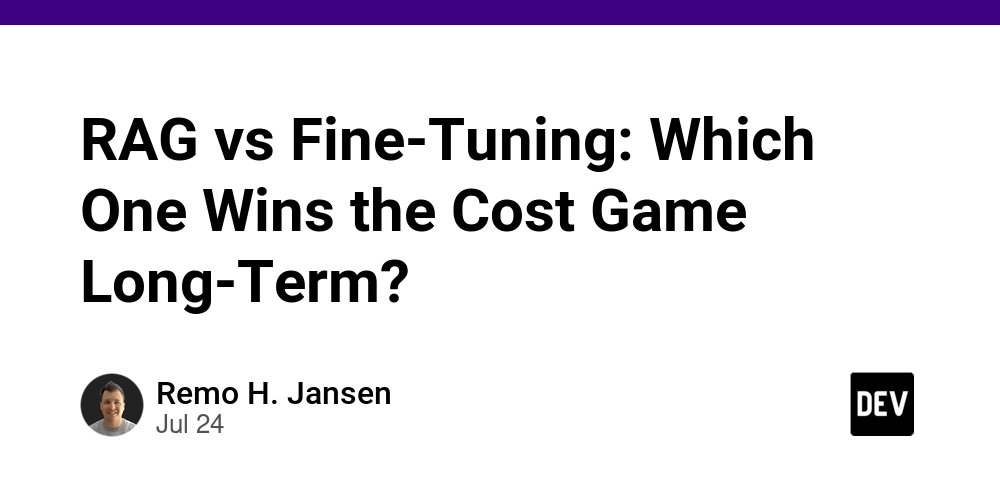RAG vs Fine-Tuning: Which One Wins the Cost Game Long-Term?
Over the past few months, I’ve been diving deep into Retrieval-Augmented Generation (RAG) and fine-tuning strategies for LLMs. While RAG is often praised for its flexibility and lower upfront cost, I’ve started to question whether that narrative holds up when you zoom out and look at the long-term economics—especially in high-volume, production-grade scenarios.
The Common Assumption: RAG is Cheaper
RAG is typically seen as the budget-friendly option. You don’t need to retrain your model. You just embed your data, store it in a vector DB (like Azure AI Search), and inject relevant chunks into the prompt at runtime. Easy, right?
But here’s the catch: every time you inject those chunks, you’re inflating your prompt size. And with LLMs, tokens = money.
The Hidden Cost of Context Bloat
Let’s say your base prompt is 15 tokens. Add a few RAG chunks and suddenly you’re pushing 500+ tokens per call. Multiply that by thousands of users and you’re looking at a serious spike in operational cost.
In fact, some benchmarks show that:
| Configuration | Cost (USD) per 1K queries |
|---|---|
| Base Model | $11 |
| Fine-Tuned Model | $20 |
| Base + RAG | $41 |
| Fine-Tuned + RAG | $49 |
So yes, RAG is cheaper to start—but not necessarily to scale.
Fine-Tuning: Expensive Upfront, Efficient Over Time
Fine-tuning gets a bad rap for being expensive. And it is—at first. You need curated data, GPU time, and a solid evaluation pipeline. But once you’ve done the work, you get:
- Lower token usage (no need to inject long context)
- Faster responses (smaller prompts = lower latency)
- More consistent outputs (less prompt engineering gymnastics)
If your use case involves repetitive queries over a stable knowledge base, fine-tuning can actually be the cheaper option in the long run.
The Hybrid Sweet Spot
Of course, it’s not always either/or. The smartest teams I’ve seen are blending both:
- Fine-tune for core domain knowledge
- Use RAG for dynamic, time-sensitive data
This hybrid approach gives you the best of both worlds: cost efficiency, flexibility, and performance.
Final Thoughts
If you’re building internal agents or customer-facing copilots, don’t just default to RAG because it’s easier to prototype. Run the numbers. Model your token usage. Think about scale.
Sometimes, the “expensive” option turns out to be the most economical—if you play the long game.
Bonus Tip: Optimize your AI costs with AI Foundry
If you’re working within the Microsoft ecosystem, I highly recommend using the Azure AI Foundry Capacity Calculator to estimate your token consumption per minute using a standardized way to measure and allocate LLM usage across workloads known as PTUs (Provisioned throughput units). PTUs help you understand how much you’re consuming and how that translates into cost. It’s a great way to model the cost impact of different architectures (RAG, fine-tuning, or hybrid) before you commit.
Using the calculator can help you make smarter architectural decisions—before they become expensive ones.
You can also reserve PTUs to enjoy up to 70% discounts compared to pay-as-you-go pricing, making them a smart choice for predictable, production-scale workloads. I highly recommend reading Right-size your PTU deployment and save big to understand how to leverage PTUs to optimize the cost of deploying enterprise Agents.
For more info, please refer to Understanding costs associated with provisioned throughput units (PTU)

